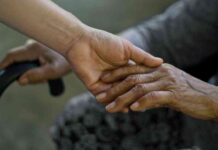Rare Paralyzing Illness in Children: Spike of Linked Virus in US Wastewater Data
A recent report from WastewaterSCAN has revealed elevated levels of a respiratory virus in wastewater samples, sparking concerns about a potential increase in cases of a rare paralyzing illness in children in the United States. The virus in question is enterovirus D68, one of the many non-polio enteroviruses that are known to circulate during the summer months. While the virus itself is common, it can lead to neurological complications, including paralysis in some cases.
Dr. Sharon Nachman, chief of the division of pediatric infectious diseases at Stony Brook Children’s Hospital, emphasized the severity of the virus, stating that it affects the nerves and can cause paralysis across the spinal cord. She noted that enterovirus D68 typically has “on and off years,” and based on recent wastewater data, it appears to be an “on year” for the virus.
Monitoring Wastewater for Infectious Diseases
WastewaterSCAN, a nonprofit organization based at Stanford University in partnership with Emory University, plays a crucial role in monitoring nationwide samples of wastewater sewage for infectious diseases. By analyzing wastewater samples, the organization can provide early warning signs of infectious diseases circulating in a community, even before symptoms are detected. This data is also shared with the Centers for Disease Control and Prevention’s (CDC) National Wastewater Surveillance System (NWSS) to help public health officials stay informed.
According to Dr. Nachman, wastewater serves as a reliable marker for determining whether a virus is present in the environment. The recent data from WastewaterSCAN indicated that levels of enterovirus D68 in sewage were classified as “moderate,” with a significant number of samples testing positive within the last 10 days. This information underscores the importance of vigilance and early detection in combating the spread of infectious diseases.
Symptoms and Complications of Enterovirus D68
In most cases, enterovirus D68 causes mild cold-like symptoms such as a runny or stuffy nose, cough, fever, body aches, and sore throat. However, in rare instances, the virus can lead to severe respiratory symptoms and a nervous system disorder known as acute flaccid myelitis (AFM). AFM can result in muscle weakness in the arms and legs, difficulty swallowing, drooping eyelids, and even paralysis, particularly in children.
Dr. Aaron Glatt, chief of infectious diseases at Mount Sinai South Nassau, described AFM as a rare but potentially serious illness that can mimic polio and have long-lasting effects on children. While most cases of paralysis associated with enterovirus D68 are temporary and can be treated with physical therapy, there are instances of permanent paralysis. Individuals at higher risk of developing severe symptoms include infants, children, and teenagers, with children who have asthma being particularly vulnerable.
Prevention and Treatment Strategies
Preventing the spread of enterovirus D68 involves simple yet effective measures such as avoiding sharing drinks, cups, and utensils, disinfecting commonly touched surfaces, practicing proper hand hygiene, and keeping sick children at home. Dr. Nachman emphasized the importance of seeking medical attention if a child displays symptoms of weakness in their legs or difficulty walking, as early intervention can lead to better outcomes.
While there is currently no vaccine available for enterovirus D68, treatment focuses on managing symptoms and providing physical therapy if weakness occurs. It is essential to contact a pediatrician if symptoms persist or worsen, especially if there is difficulty breathing, confusion, slurred speech, weakness, or paralysis. Seeking prompt medical attention can help in confirming the diagnosis and initiating appropriate treatment to alleviate symptoms and prevent further complications.
Conclusion
The recent spike in enterovirus D68 detected in wastewater samples serves as a stark reminder of the importance of ongoing surveillance and proactive measures to prevent the spread of infectious diseases. By staying informed, following preventive guidelines, and seeking prompt medical care when needed, individuals can protect themselves and their communities from potential health risks. As researchers and public health officials continue to monitor the situation, it is crucial for everyone to remain vigilant and prioritize their health and well-being.

















